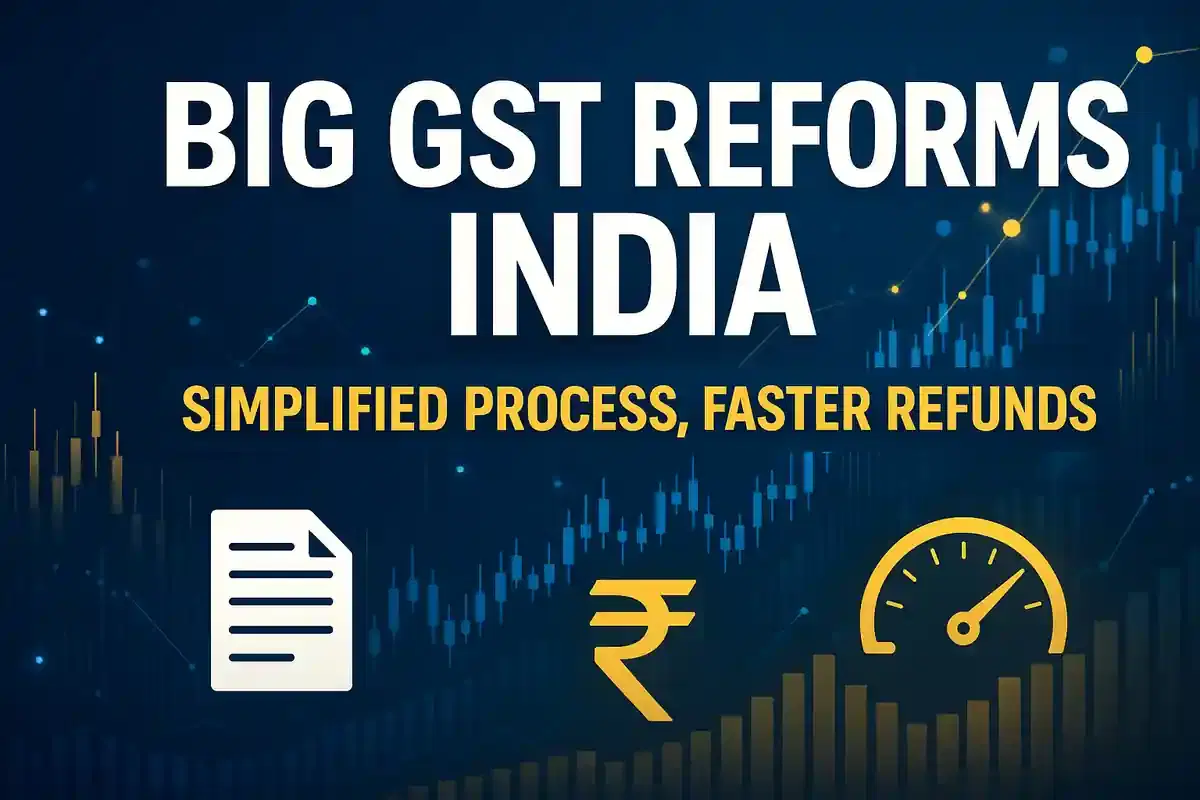Government Prepares Major GST Overhaul for Easier Compliance and Faster Refunds
Economy
|
28th October 2025, 7:11 PM

▶
Short Description :
Detailed Coverage :
The Indian government, through the Central Board of Indirect Taxes and Customs (CBIC), is undertaking a significant overhaul of the Goods and Services Tax (GST) processes. The reforms focus on digitizing scrutiny, automating refunds, and creating a data-driven system for return filing to enhance transparency, ease compliance burdens, and ensure quicker release of funds for businesses.
Central to the overhaul is the redesign of the return-filing system, which will feature auto-population of key forms by drawing data from existing documents like e-invoices and e-way bills, alongside supplier filings. This move aims to introduce pre-filled returns, thereby minimizing manual data entry and potential errors. Furthermore, data from various sources such as TDS/TCS filings, import declarations on ICEGATE, and outward supply returns (GSTR-1) will be synchronized on the GST Network (GSTN) to create a unified data backbone. This integration is expected to simplify filing, improve the matching of Input Tax Credit (ITC), and enable real-time identification of discrepancies through automated system checks, thus speeding up refund processing for exporters and MSMEs.
A digital scrutiny mechanism is also being developed. Returns will be scrutinized online using analytics-based checks, comparing data across different GST forms and e-invoice records. Discrepancies will trigger an automatic online issuance of Form ASMT-10, allowing taxpayers to submit explanations and documents digitally via Form ASMT-11. This aims for uniformity and reduces subjective interpretation in assessments.
Another key reform is the automation of refunds for excess balances in the electronic cash ledger. Currently, these refunds often require manual applications. The new system will use algorithms to automatically identify eligible balances and process refunds within set timelines, thereby improving business liquidity and convenience.
Impact This reform is expected to have a significant positive impact on businesses by reducing compliance costs, improving cash flow, and increasing the ease of doing business in India. The enhanced transparency and automation should lead to a more efficient tax administration. Rating: 8/10
Difficult Terms GST: Goods and Services Tax, a consumption tax levied on the supply of goods and services. CBIC: Central Board of Indirect Taxes and Customs, a government body responsible for indirect taxes. MSMEs: Micro, Small and Medium Enterprises, defined based on investment in plant and machinery and annual turnover. E-invoices: Electronic invoices generated for B2B transactions that are authenticated by GST Network. E-way bills: Electronic documents required for the movement of goods exceeding a certain value. TDS: Tax Deducted at Source, tax deducted by the payer before making payment to the payee. TCS: Tax Collected at Source, tax collected by the seller at the time of sale of specified goods. ICEGATE: Indian Customs Electronic Gateway, an online portal for customs related services. GSTR-1: A monthly or quarterly return detailing outward supplies of taxable goods and services. GSTR-3B: A summary return of self-declared taxes payable for a tax period. GSTR-2B: An auto-drafted Input Tax Credit (ITC) statement generated on the GST portal. ASMT-10: A notice issued by the tax officer for scrutiny of returns. ASMT-11: A reply form submitted by the taxpayer in response to ASMT-10. CGST Act: Central Goods and Services Tax Act, the primary legislation governing GST in India. ITC: Input Tax Credit, a credit claimed by taxpayers for taxes paid on inputs used in business.